Bitemojo app Singapore food tour: a review
Bitemojo food tours are not like other food tours. That’s not to criticize other food tours, mind you. I love learning about a place’s particular customs and foods. Bitemojo tours are different, though, in that they don’t include a tour guide. Instead, the tour is led via Bitemojo app, which leads you from “bite” to “bite,” pointing out sights along the way.
Note added in April 2025: Bitemojo seems not to have survived the pandemic. I’m really sorry because I loved the concept!
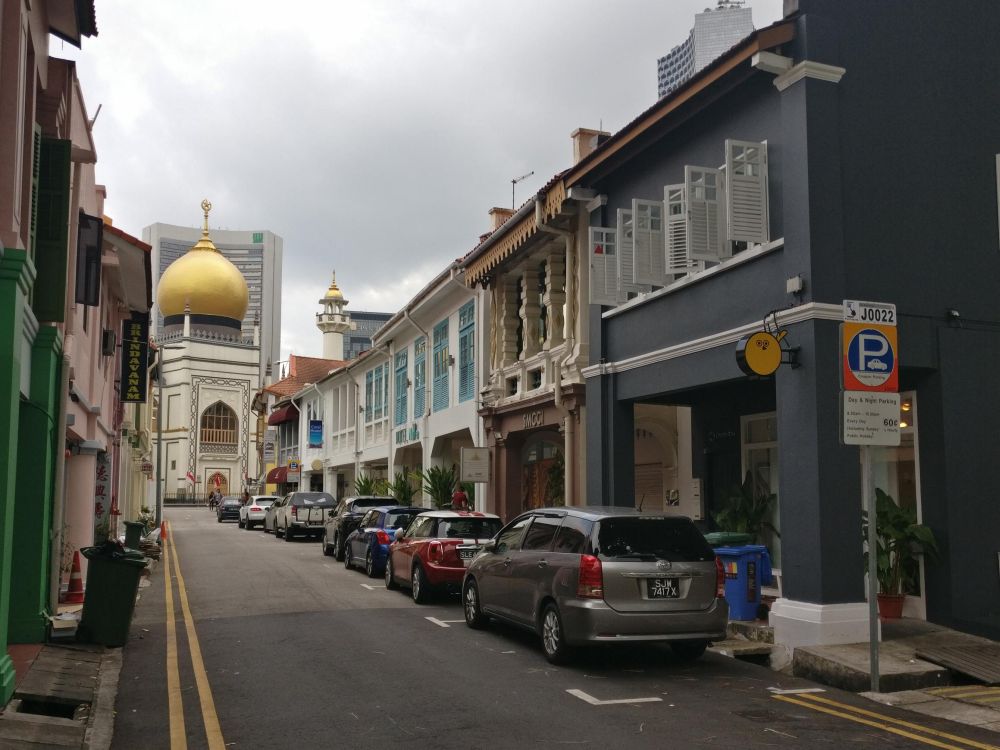
[Disclosure: I received this tour for free in exchange for writing a review. All opinions, however, are my own.]
I wrote a Bitemojo review once before, when I took a Jerusalem food tour. I did it by myself, and made the mistake early in the tour of eating too much. Both of the tours I’ve taken – the one in Jerusalem last year and my recent one in Singapore – included six “bites,” and that’s a lot of food.
Yet the tours are not just about food. They also include other interesting sights along the route, giving a brief explanation or history of each.
Bitemojo app in Singapore
This time my husband accompanied me, so this time two of us had too much to eat. Nevertheless, our Singapore food tour was a pleasure: a leisurely way to explore a neighborhood. I had chosen the Kampong Glam food tour because Kampong Glam was new to us. It was originally home to Singapore’s Malay community.
There were a number of surprises on this tour. For example, I never would have associated Singapore with art deco, yet Parkview Square was an astounding example. The app explains that locals call it the Gotham City Building, and you can see why.
While the Bitemojo app doesn’t go into great detail about Parkview Square, it does point out that the building includes a museum upstairs if you want to know more about it. The public art pieces gracing the courtyard in front of the building (including an original Botero!) were an added bonus.
If you like food tours, you might enjoy these articles:
Bite #1: Middle Eastern
Another surprise was that the food was from a range of local ethnic communities. We had our first “bite” at a place called Pita Bakery. Singapore used to have a much larger Middle Eastern population than it does these days, and this restaurant represents a return to these roots. We had fresh-baked pita, of course, accompanied by excellent hummus, as good as my favorite style of hummus from Israel.
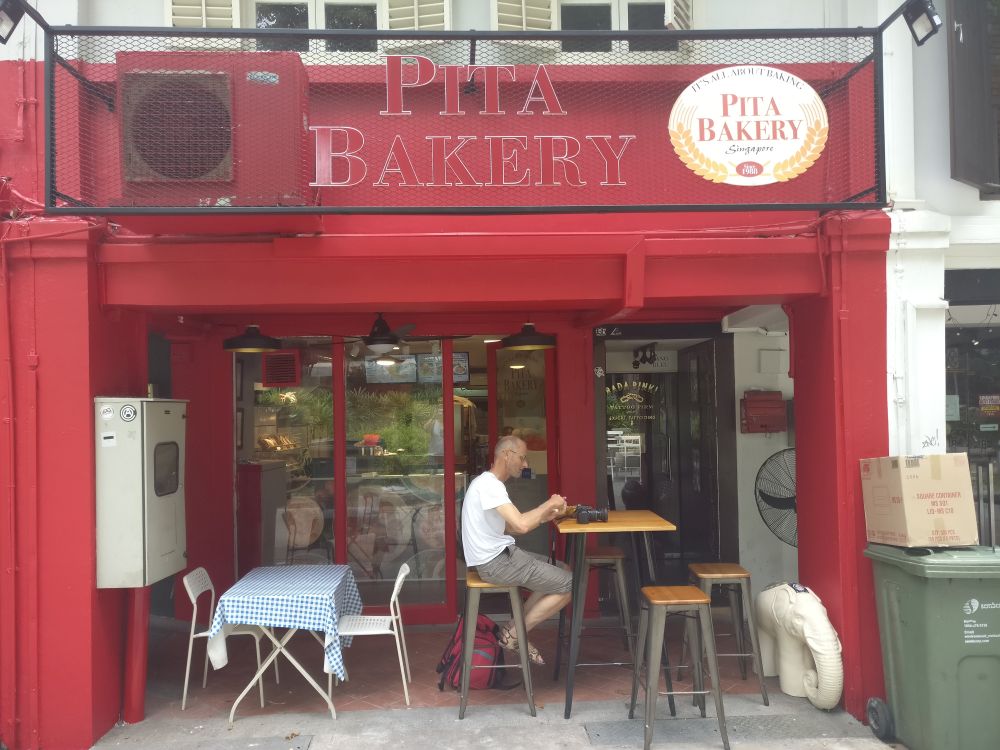
Coincidentally, or perhaps not, the first stop on my Bitemojo tour in Jerusalem was also pita and hummus, along with some falafel. That’s where I made my mistake of eating too much. This time, I didn’t finish it all in order to leave some room for the next bite.
Bite #2: Indonesian halal
In a very chic part of Kampong Glam, full of hipster cafés and pubs, we spent some time taking pictures of street art.

After telling us about the area’s history, the Bitemojo app took us to a little place we never would have noticed called Ratu Lemper, an Indonesian halal shop. Here the shop assistant handed us a plastic bag with two different items in it: ayam lemper and kaswi kueh. (If I had been alone, the bite would have been a choice between the two.) Ayam lemper is a small packet of sticky rice with a flavorful bit of chicken paste in the center, all of it neatly wrapped in banana leaf. We both loved it and gobbled it down before I remembered to take a photo.
Kaswi kueh, also called kuih kaswi) is a sweet: a gelled confection of steamed rice and tapioca flour sweetened with palm sugar and flavored with coconut and some sort of plum. The concoction is steamed and poured into a small mold to harden; traditionally a Chinese teacup was used.
I liked this “bite” more than Albert did; it wasn’t too sweet, but I think that kind of elastic texture is something I’d have to get used to.
Bite #3: Turkish
Next was a Turkish restaurant called Istanbul Grill, where we sampled yaprak sarma (grape leaves stuffed with meat and rice) and sigara boregi, which resembled a fried spring roll, but was stuffed with a mild cheese mixture. Tasty, but we were getting full.
As we ate them, we noticed tourists outside stopping and taking photos. The reason became clear when we left: the Sultan Mosque loomed at the end of the street. A very ornate structure, Sultan Mosque was completed in 1928, when it replaced an earlier mosque that was simply too small to accommodate Kampong Glam’s Muslim community.
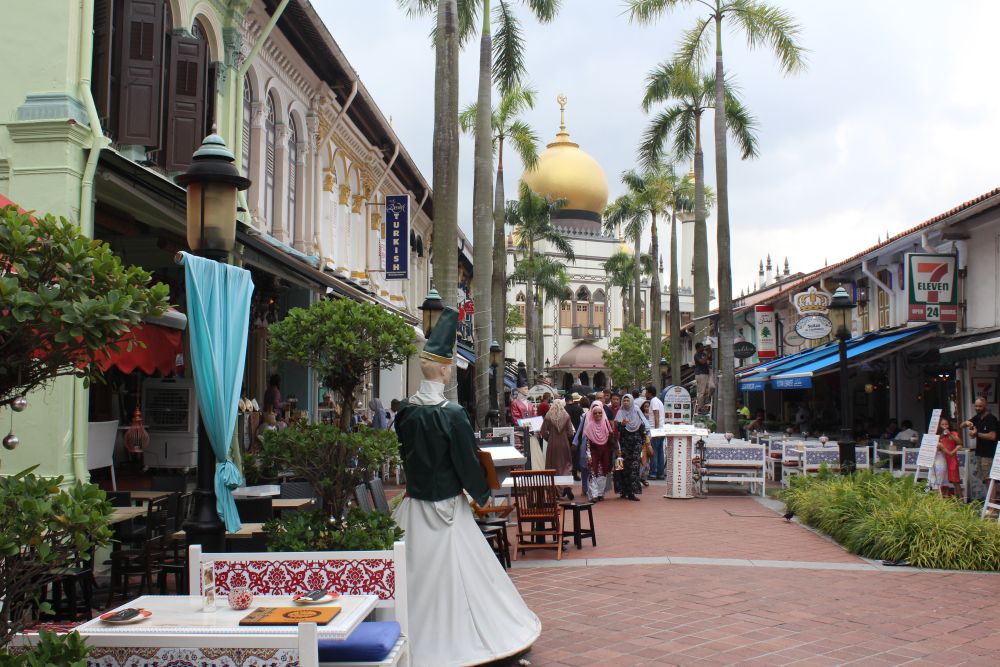
We were allowed to look inside, but Albert had to wear a sort of skirt, while I was handed an entire head-to-toe robe. The inside is as impressive as the outside.
Bite #4: Indonesian
Our next stop involved a plate of beef rendang – a Malaysian and Indonesian dish – at a very busy fast-food restaurant called Minang. Unfortunately, they had run out of their other option, stewed jackfruit, so we both had the beef rendang. We didn’t mind; it was delicious. Rendang, the Bitemojo app explained, is cooked for many hours in a mixture of spices, so the meat is very tender and flavorful.
Nearby Minang stands the Malay Heritage Centre which, according to the app, used to be the Sultan’s palace. Next to it, in a house dating to the mid-19th century, a very fancy restaurant called Mamanda serves traditional Malay food. The house was once the home of Tengku Mahmud, a son of the Sultan at the time.
Bite #5: Singaporean coffee culture
Singapore has a lively coffee and teahouse culture, and our next stop at Dong Po Colonial Café introduced us to it. Coffee and tea are often served very sweet and milky, with a hefty dose of sweetened condensed milk. Fortunately for my husband, you can also get unsweetened tea and coffee.
Our hot drink came with kaya toast: plain white bread toast spread with butter and kaya jam. Kaya jam is mostly coconut, eggs and sugar, but it looks green because it is flavored with pandan leaves. It has a mild sweet taste that I just loved. Normally it’s a breakfast food, but never mind, I still found room to eat it.
If you’re going to Singapore, read these articles!
Bite #6: Indonesian again
We did not fare as well with our last bite, at HjH Maimunah, again at a local fast-service restaurant. For the second time, we had no choice because the second option (bubur pulat hitam) wasn’t available. It’s a black-colored dessert made of black sticky rice, sugar, coconut milk and pandan leaves and we would have liked to try it.
Instead, we both had banana sago porridge, a sweet pudding made from palm starch (sago), with sweet potatoes and bananas floating in it. At this point, we couldn’t do much more than taste it. In any case, it wasn’t our favorite: it seemed a bit heavy and stodgy.
A Singapore food tour via Bitemojo app
Clearly the highlight of a Bitemojo tour is the food. You get tastes of all sorts of concoctions that you probably wouldn’t have found on your own. The app points out many sights – which it calls “hidden gems” – but only tells fairly general information about each one. It’s up to you whether to explore them further. In our case, we wandered further to see more street art and went into the mosque rather than just seeing it on the outside, but chose not to explore the Malay Cultural Center. You can choose how much more you make of Bitemojo’s tours, or whether you just focus on the food. That’s one of the things I like about Bitemojo tours: the freedom.
The restaurants and food stands are locally owned, and each one has a story. The focus of the app is on those stories. For each bite stop, the app gives detailed information about the food: what’s in it, where it’s from, how and when it’s eaten, and so forth. Swipe left or right, and you can also get the lowdown on the person who owns or runs the restaurant. The app tells their personal history and how they got to where they are. The Kampong Glam tour included several family-owned and run enterprises.
One more swipe left or right lets you read about the building the restaurant or food stand occupies. It’ll give a brief history of the building before its current use: when it was built, what businesses were there before, and so on. It’s the kind of information I enjoy, and I liked having it at hand while I was waiting for our food.
My recommendation
Should you take a Bitemojo tour? Certainly, if you like to try different foods and want to explore the sort of eateries that don’t particularly cater to tourists. At the same time, you’ll see less touristy areas and learn a bit about the local food culture and history. If it’s too much food, you can spread it over more days, which I would certainly advise. You can also take them in a different order (if you’re better at finding your way around than I am!) For the price, it’s a good deal too.
I particularly like that it is self-paced. We didn’t have to wait for people who took too long eating or otherwise delayed the tour. We weren’t rushed from sight to sight or from restaurant to restaurant. We didn’t have to listen to inane or irrelevant questions. And if we had any questions – inane or otherwise – it was easy enough to Google them as we ate.
On the other hand, if you’re the sort of person who peppers the tour guide on a traditional food tour with relevant and irrelevant questions, Bitemojo is not for you. You’d be better off with a traditional guide-led tour, but then you’ll pay more, of course. (And if you are that sort of person, give your tour guide a hefty tip as well, for his/her patience with all your questions!)
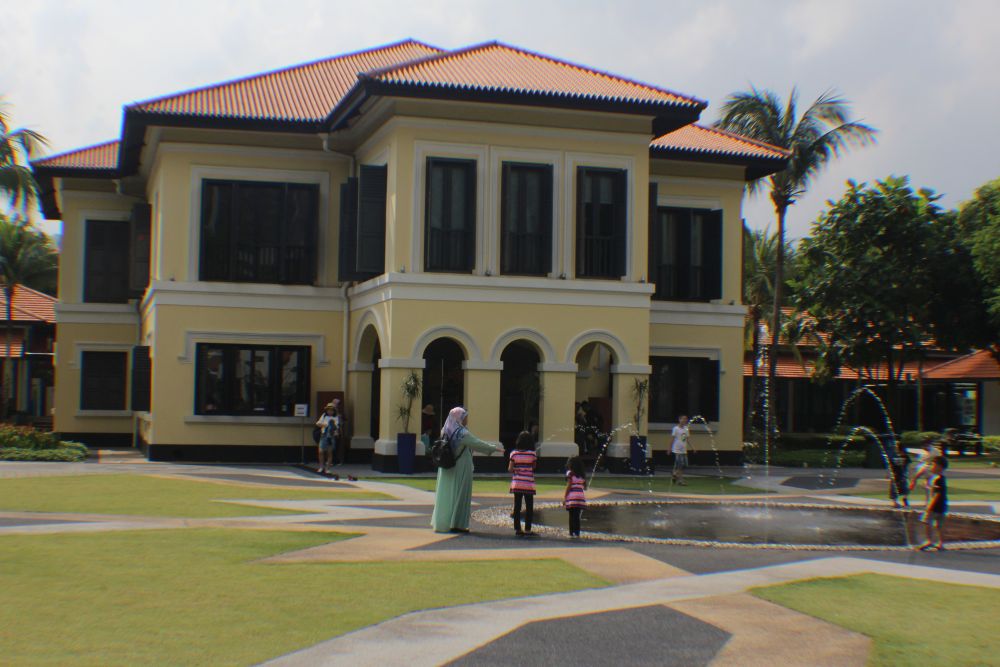
How Bitemojo works
If you’re on a mobile phone, click on this link to download the Bitemojo app before you go. Choose the city you’re visiting (They have tours at the moment in Bangkok, Barcelona, Berlin, Budapest, Jerusalem, Lisbon, Ljubljana, Madrid, Rome, Singapore and Tel Aviv. I’m sure they’ll add more cities, so it’s worth checking before you travel.) and choose one of the tours they offer in that city. Book the tour, pay through the app and make sure to take the tour within six months.
Keep in mind that you will need cellular data to take the tour. We had trouble finding the starting point and used Google maps to get there. You also need cellular data to claim each bite at each restaurant. It’s simple enough to do: just click in the app to say you’ve claimed the bite and show the screen to the person who served it to you. I kept costs down by turning off my data roaming as we walked, then just turning it on when I claimed each bite.
Another bit of advice: not all employees know about Bitemojo. Just ask politely for the manager on duty if the person who serves you doesn’t know what you’re talking about.
Prices range from US$12 to $35, depending on the city and the number of bites included. Most are in the $25-30 range.
Have you ever tried a Bitemojo tour? Or do you have other ways of learning about local food culture? Add a comment below!
I’d also appreciate if you would share this post on whatever social media you favor. The images below are formatted for Pinterest.

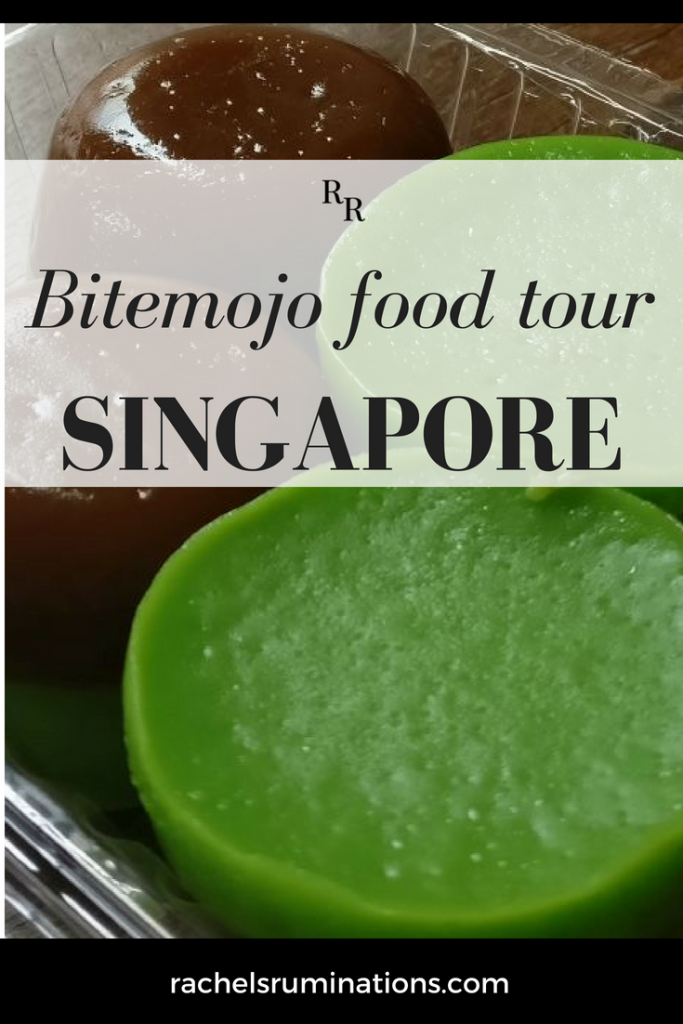




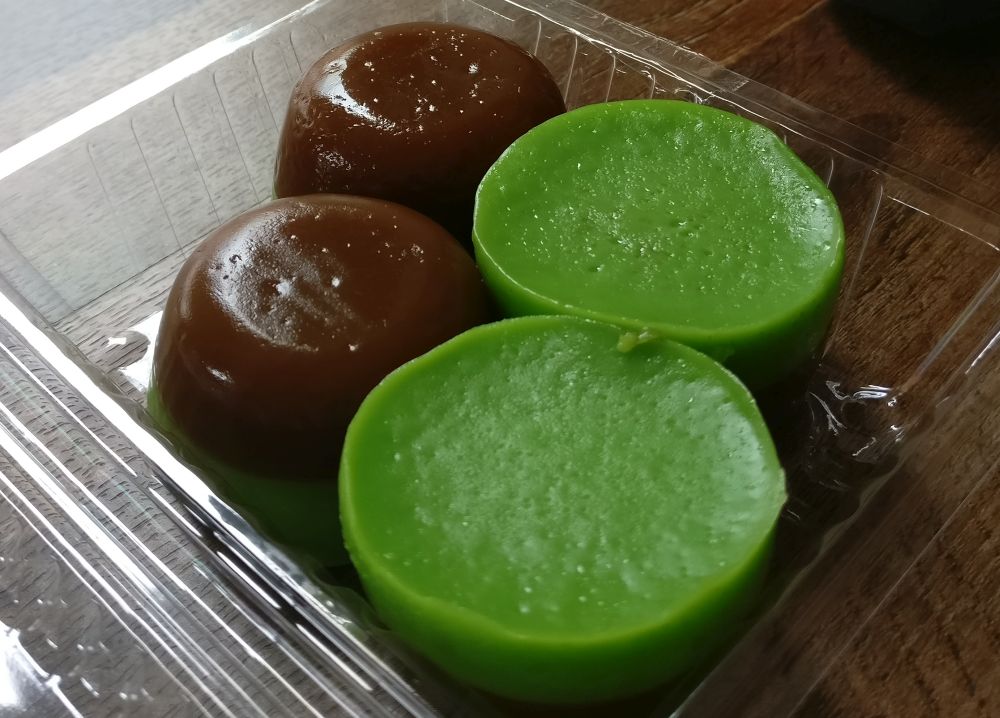


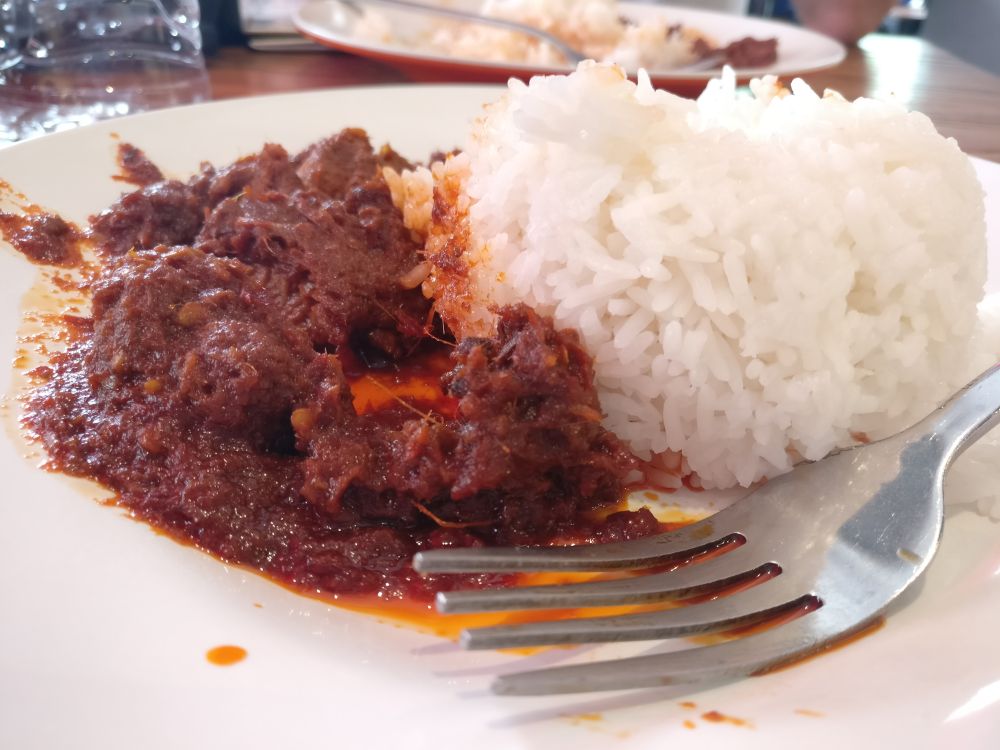
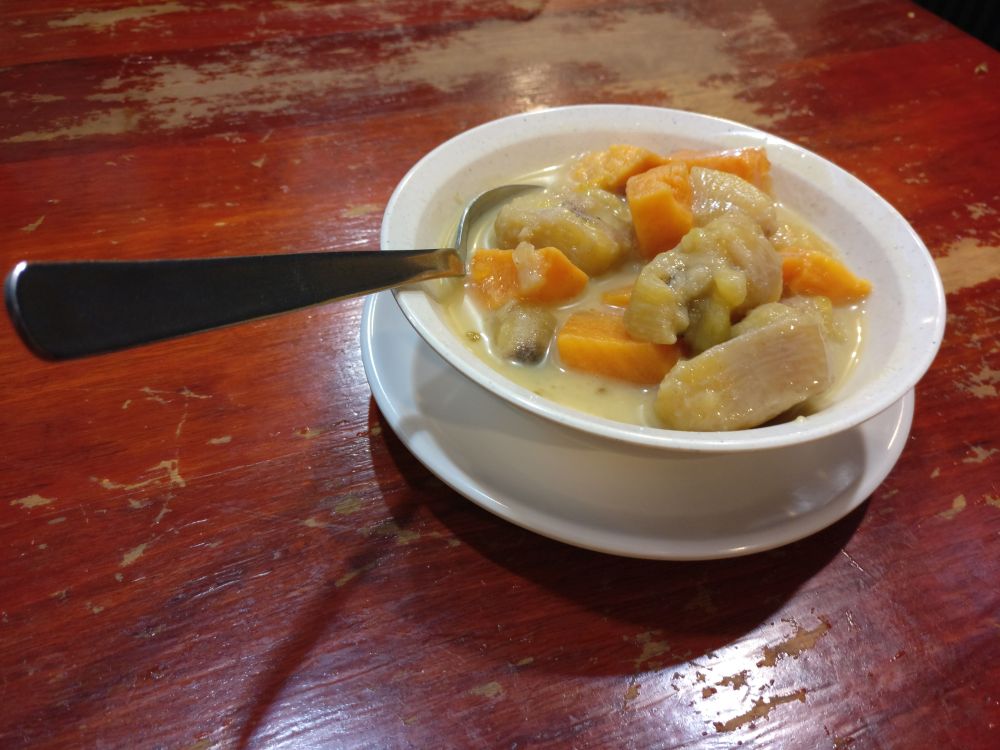


We used to live in Singapore for 6 years and thought we knew most places but from your article Rachel we have a lot more to visit when we return. Will definitely check out BiteMojo!
They’re offering two different tours in Singapore at the moment, but I’m sure more will be added in future!
Dang! I wish I had seen this before we went to Singapore last fall! We really missed out on the food scene and this would have helped a lot. Great review.
Thanks, Cindy! They’re in other countries too!